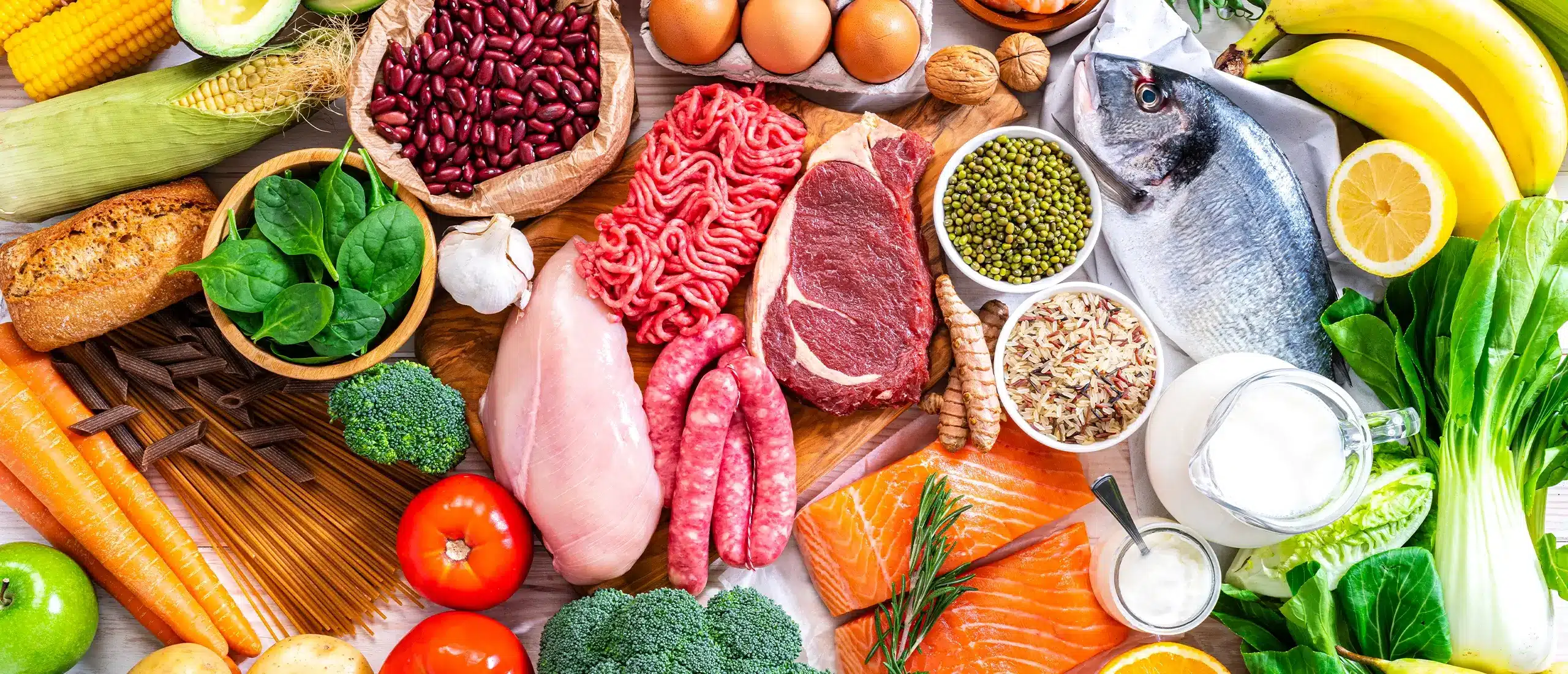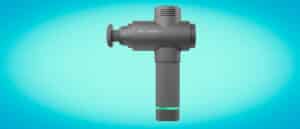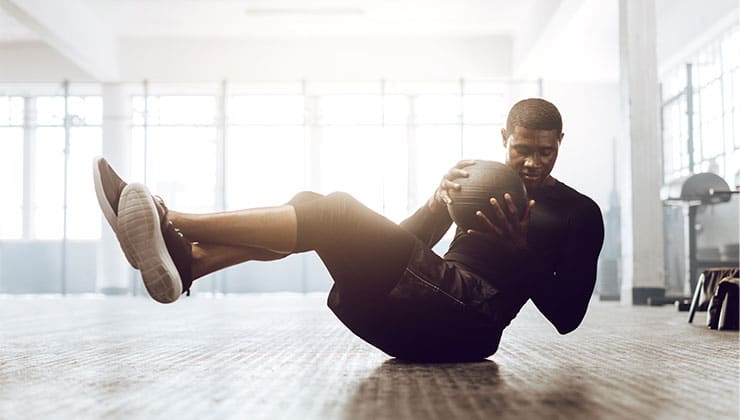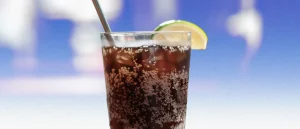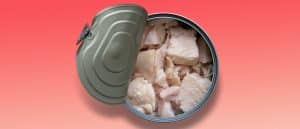12 Best Muscle Recovery Foods for Post-Workout Gains
What you eat affects how you feel—and at no time is that more true than post-pump. Putting your body through a tough training session causes small microtears in your muscle fibers (1). The tears will repair on their own within a few days, but in the meantime, your muscles may be sore and achy. The good news: Eating the right muscle recovery foods after your workout can cut down how long you’re aching, says registered dietitian Valerie Gately, MS, RDN, LD.
Your body converts carbohydrates into glucose. The body can store excess glucose as glycogen in your liver and muscles. During an intense gym session, your body can tap those glycogen stores to create glucose, which your cells use to power through your workout. After a workout you need to eat carbs to replace that glycogen, says Gately. “You also want a healthy dose of protein to facilitate muscle protein synthesis (MPS)—a fancy term for building and repairing muscles.”
For the biggest muscle recovery boost, you should eat both protein and carbs within 30 minutes to an hour after your workout. During this time, aim for about a 2-4:1 ratio of carbs to protein, with around 20-40 grams of protein (2).
The foods below are excellent sources of those macronutrients. They’re also packed with other vitamins and minerals to help your muscles repair faster, so you can crush your next workout.
About the Expert:
Valerie Gately is a registered dietitian nutritionist who specializes in sports nutrition and nutrition counseling. She has an MS in Human Nutrition from the University of Houston, and serves as a Sports Performance Dietitian at the University of New Mexico.
Eat Better
Best 12 Muscle Repair and Recovery Foods
Salmon
A single 3 ounce serving of the fatty fish packs about 18 grams of muscle-building protein (3).
Salmon is also high in omega-3 fatty acids EPA and DHA, which may help lower inflammation and reduce exercise-induced muscle damage (4). The recommended daily dose of omega-3’s for men 19-years and older is 1.6 grams, however, some researchers suggest that if you do vigorous training (running, jumping rope) you should aim for closer to 6 grams per day to reduce muscle soreness and improve strength and power output (5, 6).
Sweet Potato
Snacking on this tuber is a good way to maintain healthy muscle tissue post-workout, says Susan Greene, ACE certified Nutrition Specialist, Personal Trainer, and Health Coach.
“Sweet potatoes contain vitamin C and copper, which keep muscle fibers flexible and aid in muscle growth and repair. They’re also an excellent source of complex carbs, which replenish depleted energy levels,” she says.
We have three words for you: sweet potato fries. Peel and slice the orange spuds into fries, toss on some spices, then bake or air fry (don’t deep fry).
Chocolate Milk
“Chocolate milk is a delicious and easy recovery snack,” says Gately. “The milk is a complete protein, which means it contains all nine essential amino acids, while chocolate provides quick carbs to replace depleted energy stores.”
One cup of chocolate moo juice contains about 8 grams of protein plus electrolytes which rehydrate you quickly and maintain fluid balance inside and out of your cells (7).
Most low-fat chocolate milk has a 4:1 carbs-to-protein ratio, which is about on par with many other beverages specifically tailored to recovery. In fact, when compared to water and other sports drinks on post-exercise recovery, chocolate milk offers the same, if not better, results, according to a study published in 2019 in the European Journal of Clinical Nutrition (8).
Tart Cherries
Antioxidant-rich tart cherries may improve muscle soreness and help you feel less pain after high-intensity interval training. One recent study suggests that tart cherry juice may also help accelerate recovery after intermittent exercise (short sessions throughout the day) by reducing soreness (9).
An 8 ounce glass of some brands of tart cherry juice contain around 20 grams of sugar. But this is natural sugar. “Natural sugar adds metabolic stability, which promotes a healthy metabolism and proper energy levels,” says Greene. “Found mainly in fruit, natural sugars offer essential nutrients, like potassium and vitamin C, which help with muscle function and boost immunity, respectively.”
Beware some brands of tart cherry juice can be high in added sugar. If there’s more than 5 grams of added sugar, consider making another choice, Greene adds.
Protein Shake
A protein shake may be the most popular way to recover post-workout—for good reason. A 2018 review of studies found protein shakes have a potentially positive impact on performance and recovery when consumed post-training. It also suggests these protein supplements contribute to your total protein and total daily energy intake (10).
Pick plant-based protein or whey. Both help you build muscle, improve power output, and sculpt your physique (11).
Bananas
Bananas are ace sources of potassium, a mineral that regulates your heartbeat and helps with proper muscle function—a single medium-sized ‘nanner packs about 422 mg of the nutrient, or about an eighth of your recommended daily intake (12).
“After a workout bananas can help replenish lost glycogen stores, which in turn help restore energy levels,” says Greene.
One study on performance times in cyclists found that eating bananas while subjects cycled 75 km increased performance, recovery rates, energy levels, and focus (13).
Spinach
This leafy green veggie is the perfect go-to base for a post-workout salad. “Spinach is high in antioxidants that can help reduce inflammation and lead to better muscle recovery after your workout,” says Greene. Plus, Popeye’s go-to snack is nearly 100 percent water by weight to help you rehydrate (14).
Spinach, like most leafy greens, contains nitrates, naturally occurring compounds, which studies suggest, may have numerous health benefits, including cardiovascular support and enhanced athletic performance (15). Nitrates have also been linked to better strength and improved musculoskeletal health (16).
Greek Yogurt with Granola and Berries
A cup of Greek yogurt topped with a handful of berries and a sprinkling of granola delivers about 13 grams of protein plus healthy carbs, says Gately.
Blueberries are also a solid source of vitamins and minerals (like vitamin C, vitamin K, and manganese) known to boost immunity and promote bone and muscle strength (17). If you’re not feeling blue, raspberries are a rich source of antioxidants to fight inflammation (18).
Be picky with your granola. Some brands are sugar bombs with around 20-24 grams of sugar in a one cup serving. Scan labels to ID one with no more than 5 to 8 grams of sugar per serving.
Chia Seeds
Chia seeds are a good source of protein that can help with muscle repair and recovery, says Greene.
These tiny seeds mix seamlessly into a smoothie and contain omega-3 fatty acids, which evidence suggests help to fight inflammation and increase muscle growth (19).
As a bonus, used on occasion, they may also help you shed unwanted weight. Chia seeds can absorb massive amounts of liquid and expand in your stomach, which can slow digestion and helps you feel full for longer.
Watermelon
Consuming water after a workout helps keep your muscles cramp-free, but you don’t have to chug H20 by the gallon. Watermelon is 92 percent water. It also contains essential vitamins and minerals, like vitamin C and potassium. Vitamin C may help improve muscle recovery and potassium plays a role in regulating muscle contractions (20, 12).
Watermelon also contains an amino acid called L-citrulline, which studies suggest may diminish muscle soreness after intense exercise (21).
Cottage Cheese
With 12 grams of protein and 5 grams of carbs per half cup, cottage cheese is a great choice for muscle recovery (22). Cottage cheese also contains casein protein, a slow-digesting form of protein that can provide a steady supply of fuel that may boost recovery and influence muscle growth (23).
One study found evening exercisers who ate 40 grams of casein protein 30 minutes before going to sleep saw improved muscle recovery (24).
Hone’s at-home testosterone assessment is the simplest way to uncover whether your levels are low. If you qualify for treatment, TRT can be sent right to your door.
Protein Bar with a Sports Drink
If you’ve done a hard-core workout, this combo can help you recharge and recover, says Gately.
“A protein bar with a sports drink offers protein, carbs, and electrolytes.” You need the latter to rehydrate if your workout was over an hour, exercised in a hot or humid environment, or are a heavy sweater, she says.
“Some of my go-to protein bars are the Gatorade Whey Protein Bar, or the CLIF BUILDERS Protein Bar. For hydration replacement, I like The Right Stuff, or Liquid I.V.”
What You Should Avoid
Alcohol
“Alcohol can negatively influence the way your body stores glycogen and how quickly your muscles rebuild and repair,” says Gately.
Studies have found that alcohol consumption can reduce rates of muscle protein synthesis (MPS), which can impair exercise recovery (25, 26).
Booze is also a diuretic (meaning: it makes you pee) and can leave you dehydrated and prone to muscle cramps, fatigue, and brain fog.
Not Eating At All
The ultimate post-workout sin is not eating anything.
“While there are some foods that may be considered unhealthy, under-fueling can lead to low energy, muscle loss, intestinal problems, and poor sleep,” says Gately. “While you should aim to fuel with recovery-minded foods, putting something in your stomach is simply better than nothing.”
Non-Edible Ways to Boost Muscle Recovery
Get Enough Sleep
When you sleep, your body secretes human growth hormone (HGH), a key muscle building hormone. HGH increases healing and repair in muscle tissue post-exercise while also helping you build muscle mass. HGH secretion happens during stage 3 of NREM sleep (non-rapid eye movement), considered deep sleep. The longer you stay in this stage, the more your muscles grow and recover.
Sleep also increases blood flow to your brain. Increased blood flow brings oxygen and nutrients to clean out neural waste fluid that builds up throughout the day. Sleep improves cognitive performance, including better judgement, to keep you fresh and training smart.
Aim for 7 to 9 hours a night.
Massage Therapy
Massage relieves tight muscles, stimulates blood flow, and can reduce muscle soreness and fatigue better than other popular recovery methods like active recovery and cryotherapy, according to a review of 99 studies (27).
Foam rolling is a popular massage therapy method to target sore spots on-the-go or at-home and seems to be effective in counteracting DOMS (delayed onset muscle soreness), the result of small micro tears in the muscle fibers after exercise, according to a recently-published study (28).
Stretching
Stretching needs to be a regular part of your routine.
“Stretching is often forgotten or overlooked post-workout, but is an important part of your overall physical and mental health,” says Jordan Mueller, ACE certified personal trainer. “Stretching increases blood flow to the sore spot and surrounding areas, reduces lactic acid build-up in those muscles, reduces joint pain, lowers the risk of muscle strains, and increases flexibility and joint mobility. It can also help reduce stress.”
Just don’t overdo it and stretch further than your body will allow. “Your body will tell you what is too much. When you find the proper stretch, consistency is key,” adds Mueller.
The Bottom Line
What you eat after a workout affects how you recover. Focus on the best muscle recovery foods—ones that contain protein and carbohydrates—to see positive gains towards growth and repair.
References
1. American College of Sports Medicine (2011). Delayed Onset Muscle Soreness (DOMS).
2. Kerksick, C. et al. (2022). International Society of Sports Nutrition Position Stand: Nutrient Timing.
3. U.S. Department of Agriculture (2020). Salmon, Raw.
4. Kyriakidou, Y.; et al. (2021). The effect of Omega-3 polyunsaturated fatty acid supplementation on exercise-induced muscle damage.
5. National Institutes of Health (2023). Omega-3 Fatty Acids.
6. VanDusseldorp, T.; et al. (2020). Impact of Varying Dosages of Fish Oil on Recovery and Soreness Following Eccentric Exercise.
7. U.S. Department of Agriculture (2020). Chocolate Milk, NFS.
8. Amiri, M.; et al. (2019). Chocolate milk for recovery from exercise: a systematic review and meta-analysis of controlled clinical trials.
9. Quinlan, R. and Hill, J. (2019). The Efficacy of Tart Cherry Juice in Aiding Recovery After Intermittent Exercise.
10. Nieman, D.; et al. (2015). Metabolomics-Based Analysis of Banana and Pear Ingestion on Exercise Performance and Recovery.
11. Sim, M.; et al. (2021). Dietary Nitrate Intake Is Positively Associated with Muscle Function in Men and Women Independent of Physical Activity Levels.
12. National Institutes of Health (2022). Potassium.
13. Cintineo, H.; et al. (2018). Effects of Protein Supplementation on Performance and Recovery in Resistance and Endurance Training.
14. U.S. Department of Agriculture (2020). Spinach, Mature.
15. McDonagh, S. et al. (2019). Potential Benefits of Dietary Nitrate Ingestion in Health and Clinical Populations: A Brief Review.
16. Anderson, O. et al. (2022). Effects of Nitrate Supplementation on Muscle Strength and Mass A Systematic Review.
17. Cleveland Clinic (2022). The Health Benefits of Blueberries.
18. Lopez-Corona, A, et al. (2022). Antioxidant, Anti-Inflammatory, and Cytotoxic Activity of Phenolic Compound Family Extracted From Raspberries (Rubus idaeus): A General Review.
19. Gatorade Sports Science Institute (2021). Omega-3 Fatty Acids for Training and Exercise Recovery: A Muscle-Centric Perspective in Athletes.
20. Chou, C. et al. (2018). Short-Term High-Dose Vitamin C and E Supplementation Attenuates Muscle Damage and Inflammatory Responses to Repeated Taekwondo Competitions: A Randomized Placebo-Controlled Trial.
21. Banaszek, A.; et al. (2019). The Effects of Whey vs. Pea Protein on Physical Adaptations Following 8-Weeks of High-Intensity Functional Training (HIFT): A Pilot Study.
22. U.S. Department of Agriculture (2019). Cheese, Cottage, Low Fat, 2% Milkfat.
23. Martínez-Sánchez, A.; et al. (2017). Biochemical, physiological, and performance response of a functional watermelon juice enriched in L-citrulline during a half-marathon race.
24. Kanda, A.; et al. (2016). Effects of Whey, Caseinate, or Milk Protein Ingestion on Muscle Protein Synthesis after Exercise.
11. Kim, J. (2020). Pre-sleep casein protein ingestion: new paradigm in post-exercise recovery nutrition.
25. Laufenberg, L. (2021). Alcohol Acutely Antagonizes Refeeding-Induced Alterations in the Rag GTPase-Ragulator Complex in Skeletal Muscle.
26. Parr, E.; et al. (2014). Alcohol Ingestion Impairs Maximal Post-Exercise Rates of Myofibrillar Protein Synthesis following a Single Bout of Concurrent Training.
27. Dupuy, O.; et al. (2018). An Evidence-Based Approach for Choosing Post-exercise Recovery Techniques to Reduce Markers of Muscle Damage, Soreness, Fatigue, and Inflammation: A Systematic Review With Meta-Analysis.
28. Adamczyk, J.; et al. (2020). Does the type of foam roller influence the recovery rate, thermal response and DOMS prevention?.



